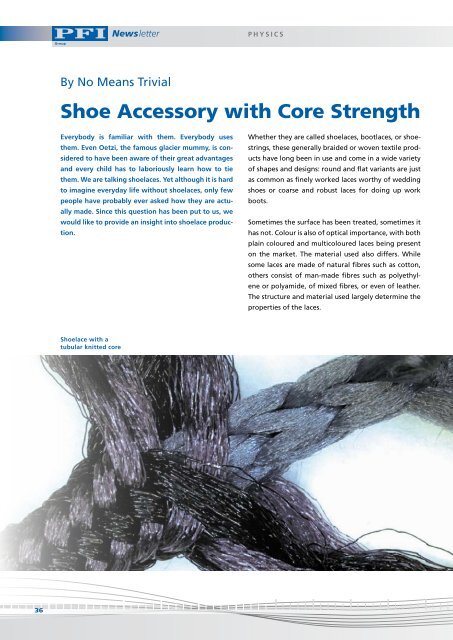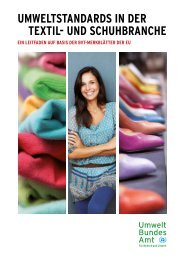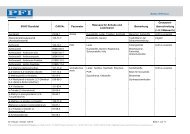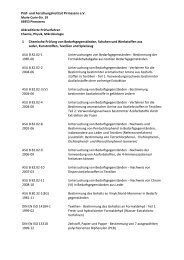Here - PFI Group
Here - PFI Group
Here - PFI Group
You also want an ePaper? Increase the reach of your titles
YUMPU automatically turns print PDFs into web optimized ePapers that Google loves.
36<br />
Newsletter<br />
By No Means Trivial<br />
Shoe Accessory with Core Strength<br />
Everybody is familiar with them. Everybody uses<br />
them. Even oetzi, the famous glacier mummy, is considered<br />
to have been aware of their great advantages<br />
and every child has to laboriously learn how to tie<br />
them. We are talking shoelaces. Yet although it is hard<br />
to imagine everyday life without shoelaces, only few<br />
people have probably ever asked how they are actually<br />
made. Since this question has been put to us, we<br />
would like to provide an insight into shoelace production.<br />
Shoelace with a<br />
tubular knitted core<br />
PHYSICS<br />
Whether they are called shoelaces, bootlaces, or shoestrings,<br />
these generally braided or woven textile products<br />
have long been in use and come in a wide variety<br />
of shapes and designs: round and flat variants are just<br />
as common as finely worked laces worthy of wedding<br />
shoes or coarse and robust laces for doing up work<br />
boots.<br />
Sometimes the surface has been treated, sometimes it<br />
has not. Colour is also of optical importance, with both<br />
plain coloured and multicoloured laces being present<br />
on the market. The material used also differs. While<br />
some laces are made of natural fibres such as cotton,<br />
others consist of man-made fibres such as polyethylene<br />
or polyamide, of mixed fibres, or even of leather.<br />
The structure and material used largely determine the<br />
properties of the laces.
















